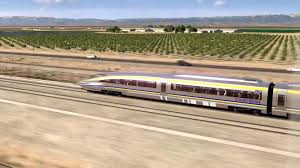
Introduction
The California High-Speed Rail (CHSR) project is one of the most ambitious infrastructure endeavors in the United States. Aimed at connecting major metropolitan areas such as San Francisco and Los Angeles with a high-speed rail system, the project promises to redefine transportation, reduce greenhouse gas emissions, and provide a modern alternative to congested highways and airports. Despite financial hurdles and political scrutiny, ongoing construction signals a commitment to its completion and future expansion.
The Vision: A State-of-the-Art High-Speed Rail System
The California High-Speed Rail Authority (CHSRA) envisions a 220-mph electrified rail network spanning the state, offering an efficient, environmentally friendly alternative to air and automobile travel. Originally estimated at $33 billion, cost projections have surged to between $89 billion and $128 billion, reflecting both the increasing scope and inflation-related expenses. However, proponents argue that the long-term benefits outweigh the upfront costs, citing economic growth, reduced traffic congestion, and sustainability as key advantages.
Construction Progress and Key Milestones
As of early 2025, significant progress has been made:
- Central Valley Construction: The first operational phase focuses on a 119-mile stretch from Madera to Poplar Avenue, with planned extensions increasing it to 171 miles, linking Merced and Bakersfield.
- Track Installation and Electrification: Rail laying has commenced, bringing the project closer to operational testing.
- Environmental Approvals: With 422 miles of environmental clearance secured, future extensions toward the Bay Area and Los Angeles are now more feasible.
These milestones demonstrate that despite budget overruns, the project is steadily advancing, with the potential for partial operations to begin as early as 2030.
Financial Challenges and Revised Project Scope
Infrastructure megaprojects often face financial strain, and CHSR is no exception. Originally conceived as a full-scale high-speed rail network from San Francisco to Los Angeles, funding constraints have necessitated a phased approach:
- Initial Operating Segment (IOS): Focuses on Merced to Bakersfield, which serves as a proof of concept for future expansions.
- Future Expansions: Once operational, additional funding sources could facilitate extensions to key metropolitan hubs.
While critics argue that the project’s costs have spiraled out of control, supporters emphasize that infrastructure investments of this magnitude inevitably require phased implementation and long-term financial planning.
Economic and Environmental Impact
Job Creation and Economic Growth
The construction phase alone has generated thousands of jobs, particularly in California’s Central Valley. Once operational, the high-speed rail will stimulate economic development by improving regional connectivity and creating opportunities around transit hubs.
Environmental Benefits
The CHSR is a cornerstone of California’s climate strategy, aiming to:
- Reduce automobile reliance and associated emissions.
- Provide an alternative to short-haul flights, which are highly carbon-intensive.
- Promote urban development around transit-oriented infrastructure.
By replacing cars and planes with an electrified rail system, CHSR supports California’s ambitious climate goals.
Political Landscape and Public Opinion
The project has sparked intense debate. Some political leaders champion CHSR as a transformative step toward sustainable infrastructure, while opponents cite budget overruns and delays as justification for scaling it back or canceling it altogether. Governor Gavin Newsom remains a vocal supporter, emphasizing its long-term value despite financial challenges.
Future Prospects and Expansion Plans
Looking ahead, the CHSR has the potential to revolutionize U.S. transportation if successfully implemented. Key priorities include:
- Securing Additional Funding: State and federal support will be crucial to completing further segments.
- Private Investment Partnerships: Engaging private investors could provide additional capital and efficiency in project execution.
- Expanding to Major Cities: The ultimate goal remains a fully connected network linking California’s largest cities.
Conclusion
The California High-Speed Rail project represents a bold vision for the future of transportation. While financial and political challenges persist, ongoing progress and the project’s potential benefits make it a transformative endeavor. If completed as planned, CHSR will redefine mobility in California and serve as a model for high-speed rail initiatives across the United States.